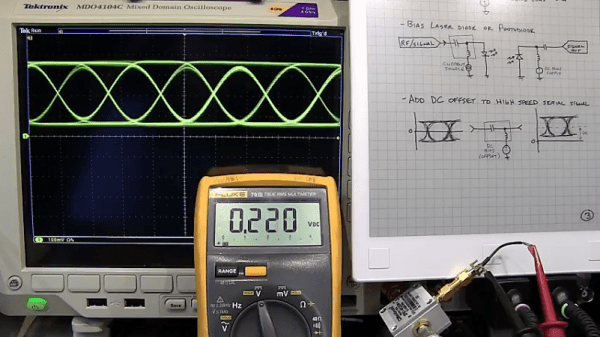It’s a story we’ve told dozens of times already. The cost to manufacture a handful of circuit boards has fallen drastically over the last decade and a half, which has allowed some interesting experiments on what PCBs can do. We’ve seen this with artistic PCBs, we’ve seen it with enclosures built out of PCBs, and this year we’re seeing a few experiments that are putting coils and inductors on PCBs.
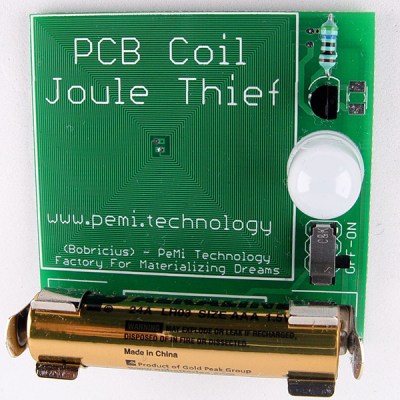 At the forefront of these experiments in PCB coil design is [bobricious], and already he’s made brushless and linear motors using only tiny copper traces on top of fiberglass. Now he’s experimenting with inductors. His latest entry to the Hackaday Prize is a Joule Thief, a simple circuit, but one that requires an inductor to work. If you want an example of what can be done with spirals of copper on a PCB, look no further than this project.
At the forefront of these experiments in PCB coil design is [bobricious], and already he’s made brushless and linear motors using only tiny copper traces on top of fiberglass. Now he’s experimenting with inductors. His latest entry to the Hackaday Prize is a Joule Thief, a simple circuit, but one that requires an inductor to work. If you want an example of what can be done with spirals of copper on a PCB, look no further than this project.
The idea was simply to make a Joule Thief circuit. The circuit is not complicated — you only need a transistor, resistor, and an inductor or transformer to boost the voltage from a dead battery enough to light up an LED.
The trick here is that instead of some wire wrapped around a ferrite or an off-the-shelf inductor, [bobricious] is using 29 turns of copper with six mil traces and spacing on a PCB. Any board house can do this, which means yes, you can technically reduce the BOM cost of a Joule Thief circuit at the expense of board space. This is the year of PCB inductors, what else should be be doing with creative PCB trace designs?

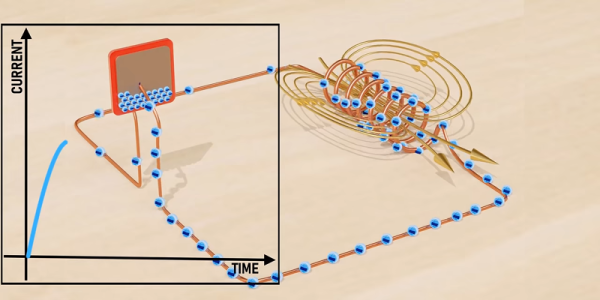
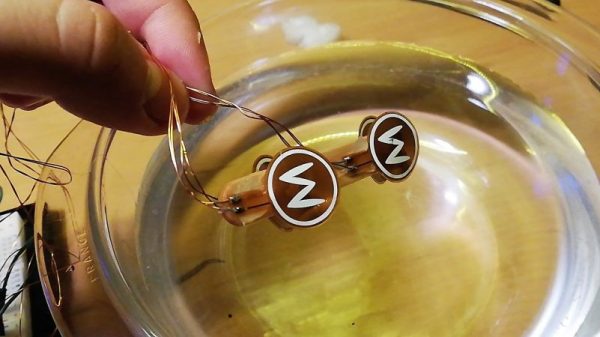
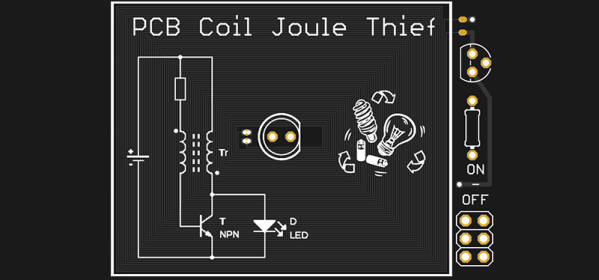
 At the forefront of these experiments in PCB coil design is [bobricious], and already he’s made brushless and linear motors using only tiny copper traces on top of fiberglass. Now he’s experimenting with inductors. His latest entry to the Hackaday Prize
At the forefront of these experiments in PCB coil design is [bobricious], and already he’s made brushless and linear motors using only tiny copper traces on top of fiberglass. Now he’s experimenting with inductors. His latest entry to the Hackaday Prize 


